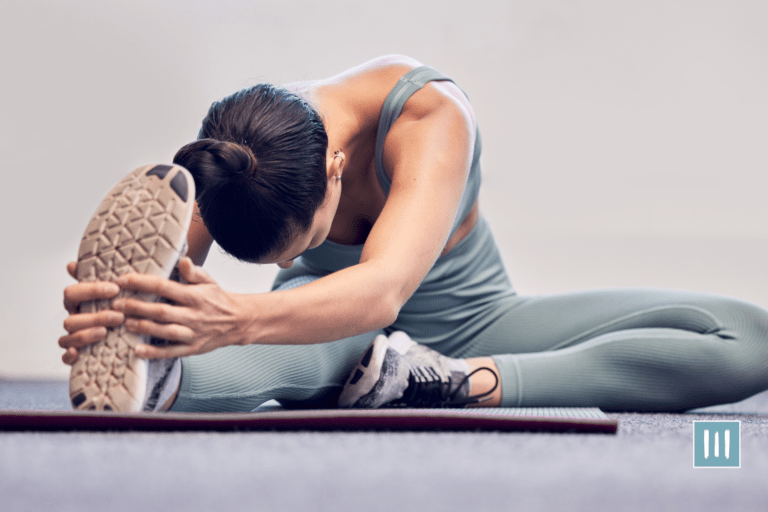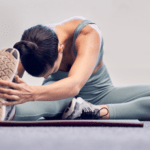Have you ever felt your body resist simple movements, like bending down to tie your shoes or reaching for something on a high shelf? Mobility challenges are more common than you might think. In the UK, approximately 48% of individuals with disabilities report mobility impairments. This makes it the most frequently reported type of disability. You may argue that not everyone suffers such limitations. However, mild stiffness can affect everyday comfort and functionality.
Flexibility isn’t a luxury reserved for yogis or athletes. It’s a fundamental component of physical health that often goes overlooked. Whether you’re lifting weights, running, or simply sitting at your desk, flexibility plays an important role in how your body performs. Stretching is a proven way to improve flexibility. It offers benefits that extend far beyond the ability to touch your toes.
Stretching is more than just a warm-up or cool-down. It’s an essential practice for a healthier, more balanced life. It has the ability to enhance mobility, reduce discomfort, and support overall well-being.
The Benefits of Stretching
Stretching delivers a range of benefits that can transform how your body feels and functions:
Improved Posture
Prolonged sitting or repetitive movements can lead to muscle imbalances and tightness. Muscular imbalances could result in poor posture. Stretching helps lengthen shortened muscles in areas like the hamstrings and hip flexors. This reduces strain on the spine and improving alignment.
Reduced Risk of Injuries
Tight muscles are more prone to strains and injuries during physical activity. Stretching keeps muscles supple and joints stable. Flexible joints help your body withstand the physical demands of daily activities.
Enhanced Athletic Performance
A greater range of motion means more power, speed, and efficiency in your movements. Stretching allows your muscles to work optimally, improving athletic performance and recovery.
Relief from Muscle Soreness and Tension
Stretching increases blood flow to fatigued muscles, aiding recovery and reducing stiffness. Whether it’s after a workout or a long day, stretches like forward folds can release tension. Not to mention, improved flexibility!
Mental and Emotional Well-Being
Stretching is not just a physical practice—it’s a way to connect with your body and mind. By focusing on breathing and movement, you can quiet mental chatter, reduce stress, and feel calmer and more relaxed.
Why Hamstring Flexibility Is Key
While stretching benefits the entire body, certain muscle groups deserve extra attention. One of these muscles are hamstrings. Hamstrings are essential for overall mobility. Also, these muscles are closely linked to common issues like lower back pain and poor posture. Tight hamstrings can limit movement and disrupt alignment. This tightness can create a ripple effect of discomfort throughout the body.
Flexibility improvements occur in two phases:
- Nervous System Adaptation – Quick gains occur when your existing muscle fibers learn to relax fully.
- Sarcomerogenesis – Over time, your body creates new sarcomeres. Sarcmoeres are the contractile units of muscle fibers. This will increase length and elasticity.
These processes can help you develop a strategy for your hamstring flexibility. Over time, it can help you improve your flexibility and prevent pain.
Understanding Your Hamstrings
The hamstrings consist of three primary muscles: the biceps femoris, semimembranosus, and semitendinosus. These muscles originate from the ischial tuberosity at the pelvis and extend to the lower legs, crossing over the knee and hip joints. The hamstrings they function across two joints. Because of that, they are integral to dynamic movements like walking, running, and bending.
The hamstrings also play a role in:
- Posterior pelvic tilt (tucking the tailbone).
- Hip extension (kicking the leg back).
- Medial and lateral hip rotation (subtle internal and external movements).
Their involvement in multiple movements makes them prone to tightness. Over time, it may cascade into broader issues.
How Tight Hamstrings Affect the Body
Hamstrings and Their Ripple Effect
Tight hamstrings do more than restrict flexibility. They create a chain reaction of discomfort and dysfunction. Hamstrings span the hip and knee joints. Their tightness can compromise mobility. It can also contribute to problems in the lower back, knees, and overall posture.
Lower Back Pain
Tight hamstrings limit the pelvis’s natural movement, causing it to tilt backward. This misalignment strains the lumbar spine, often leading to lower back pain. Stretching the hamstrings restores pelvic alignment, reducing pressure on the lower back.
Knee Strain and Instability
The hamstrings stabilize the knees during movement. Tight hamstrings pull on the tendons and ligaments. It may reduce mobility and increase the risk of strains or injuries. Regular stretching enhances knee stability and reduces discomfort.
Postural Imbalances
Tight hamstrings can cause a flat lower back or rounded upper back. Both of them may result in fatigue and chronic pain. Maintaining flexibility in this essential muscle group helps correct these imbalances. This is also an excellent way to improve posture.
Debunking the Myths Around Hamstring Tightness
Have you been told that tight hamstrings are caused by weakness? Or they are entirely controlled by your nervous system? Then you’ve only heard part of the story.
While weak hamstrings can contribute to tightness, strength isn’t the only factor.
While weak hamstrings can contribute to tightness, strength isn’t the only factor.
Flexibility is influenced by a combination of factors. It could be muscle elasticity, nervous system response, and joint mobility. The nervous system indeed plays a role in regulating muscle tension through the myotatic reflex. But flexibility also depends on stretching practices train your muscles to relax.
Misunderstanding these nuances often leads to incomplete advice. Myths like these fails to address the root causes of tightness. A more comprehensive approach can better improve hamstring flexibility.
Effective Hamstring Stretching Techniques
Stretching your hamstrings effectively requires both proper technique and patience. Here are two simple yet powerful stretches to include in your routine:
Ragdoll Pose
The Ragdoll Pose is beneficial for releasing tension in the hamstrings and the lower back. This pose involves a gentle forward fold that allows the muscles to elongate under controlled conditions.
How to Perform:
- Stand with your feet hip-width apart, knees slightly bent.
- Hinge at the hips and fold forward, letting your arms dangle toward the floor or resting your forearms on a chair for support.
- Allow your head to hang freely and focus on relaxing your hamstrings and lower back.
- Hold for 2–5 minutes while breathing deeply to deepen the stretch.
Supported Forward Fold
Like the Ragdoll Pose, the Supported Forward Fold also provides a deeper stretch. It allows a more pronounced forward bend. This pose is excellent for more actively engaging the hamstrings. You will still have support to maintain comfort and safety.
How to Perform:
- Stand in front of a chair or countertop.
- Place your hands on the support and slowly hinge forward at your hips.
- Keep your legs straight or slightly bent, feeling the stretch in your hamstrings.
- Drop your head between your arms to relax your spine and neck.
- Hold for 2–5 minutes, using controlled breathing to sustain the stretch.
Still want a detailed visual guide and step-by-step instructions? Watch the comprehensive video by Lucas Rockwood. He delves into effective hamstring stretching techniques. Watch the complete video for his demonstrations on how to achieve deeper flexibility.
The Science of Hamstring Stretching
Nervous System and Muscle Spindles
Hamstring flexibility is closely tied to the muscle spindle, a sensory receptor that triggers the myotatic reflex when your muscle stretches too far or too fast. This reflex causes the muscle to contract, protecting it from overstretching. Understanding and moderating this reflex is crucial for safe and effective stretching.
Passive Stretching and “Wet Noodle” Relaxation
Passive stretching focuses on allowing your body to fully relax, similar to the concept of a “wet noodle.” This deep relaxation minimizes tension in the muscles, encouraging them to lengthen effectively.
Time Under Tension
Holding stretches for 2–5 minutes gives your muscles enough time to adapt and create long-term flexibility gains.
Importance of Sarcomerogenesis
Sarcomerogenesis is the formation of new sarcomeres within muscle fibers. It is a key adaptation for improving flexibility. This process allows muscles to lengthen over time, increasing elasticity and range of motion.
Breathing Techniques
Controlled breathing (inhale for 4 counts, exhale for 8) helps calm your nervous system, dampening the stretch reflex and promoting deeper relaxation.
Practical Ways to Incorporate Stretching Into Daily Life
Morning Stretching Routine
Start your day with gentle stretches like a seated spinal twist or standing forward fold to loosen stiffness from a night of rest.
Desk-Friendly Breaks
Combat the effects of prolonged sitting with quick stretches at work. For instance, perform a seated hamstring stretch by extending one leg forward, placing your heel on the ground, and leaning slightly forward to feel the stretch. Stretch breaks can improve posture and reduce stiffness.
Workout Integration
Include dynamic stretches, like leg swings, during your warm-up to prepare your muscles for activity. After your workout, focus on static stretches, like the Supported Forward Fold, to aid recovery and enhance flexibility.
Evening Wind-Down
End your day with calming stretches like child’s pose or a seated forward fold. These stretches, paired with deep breathing, can relieve tension and prepare your body and mind for restful sleep.
Use Props for Assistance
Tools like yoga straps or blocks can make stretches more effective, regardless of flexibility level.
Building a Foundation for Long-Term Flexibility
Improving hamstring flexibility and overall mobility isn’t about quick fixes. It’s about consistency, patience, and understanding your body’s needs. By integrating targeted stretches into your daily routine, focusing on proper techniques, and addressing hamstring tightness, you can unlock a healthier, more balanced life.
Start small. A five-minute morning routine or a calming stretch before bed is a perfect place to begin. But most importantly, be consistent. Each step brings you closer to better posture, reduced discomfort, and enhanced physical performance. Stretching isn’t just an exercise, it’s an investment in your well-being.

















